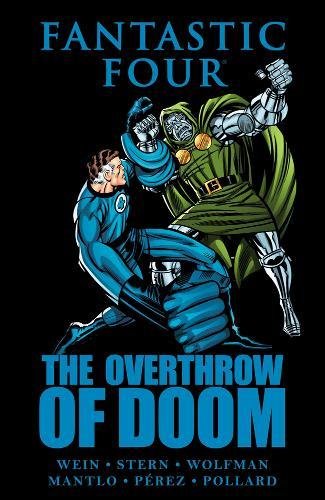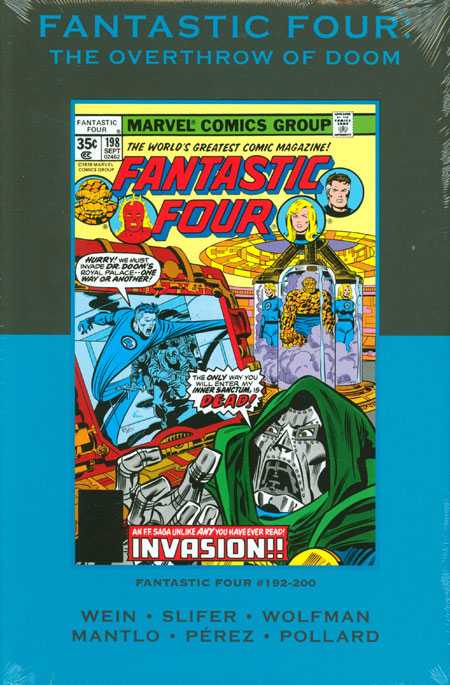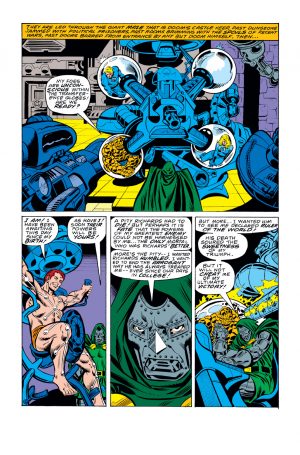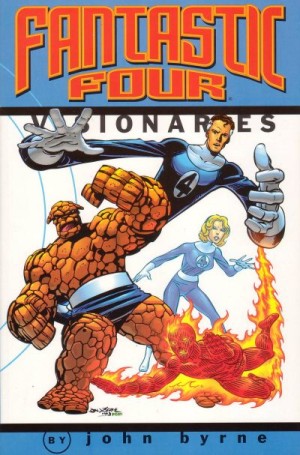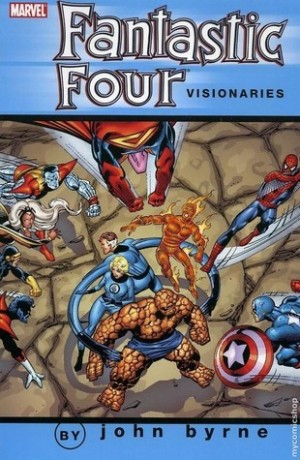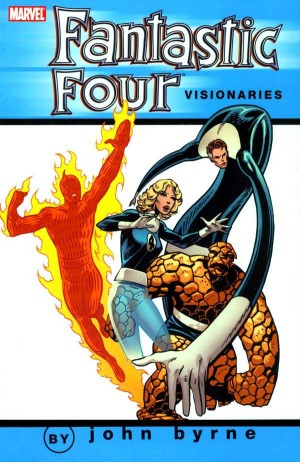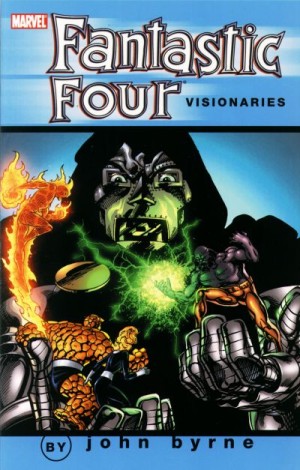Review by Ian Keogh
The sheer bulk of creators involved in what’s nine reprinted issues of Fantastic Four indicate a series in flux if you’re feeling generous, or plain thrashing around if not. The writing settles down with Marv Wolfman taking sole control after three chapters, but the art continues to fluctuate as Joe Sinnott, Dave Hunt and Pablo Marcos finish the pages from layouts by provided by pencillers George Pérez and Keith Pollard. Sinnott’s work is the class act, able to give Pollard’s Kirbyesque style the proper gravitas (sample art). It’s Pérez who kicks things off, though, the first two issues also found in the second volume of Fantastic Four Visionaries: George Pérez, which also features the stories immediately before those collected here.
If the creators are in flux, so are the team. The opening chapters have the Fantastic Four short of money, needing to tout their services for wages. In the Human Torch’s case this is as simple as heading down to Texas for some drag racing. The Thing ends up at NASA, the Invisible Woman turns up in Hollywood and the genius of Reed Richards is put to work in a remote location for a mysterious benefactor only seen in the shadows. Each inevitably encounters an enemy, and each has a solo adventure. It’s noticeable that the male team members deal with their situations confidently and forcefully, while Susan Richards is riddled with doubts in a scenario where Sub-Mariner provides the power.
It’s Reed’s situation that comes to dominate, with the rest of the team eventually joining him. The title being The Overthrow of Doom gives the identity of the major villain away, but seasoned FF readers would have picked up on the planted visual clues anyway. He’s also mentioned several times by others before he’s revealed, and Reed’s speculations point in that direction. Once Doom is revealed, individual chapters are proclaimed “The Greatest F.F. Epic of All”, and it grates. It was obviously intended as light-hearted hyperbole in the mighty Marvel manner, but it’s insulting considering it recycles characters who’ve appeared in far better stories, adds almost nothing, and is drawn by Pollard and Sinnott working in the style of those better stories. Wolfman’s plot is mad-scientist nutty, extended by using characters who have no purpose in the bigger scheme, and the finale requires an inexplicable change of heart. The revolution subplot has its moments and what eventually defeats Doom is well conceived, the best aspect of what’s a really wordy let down. Wolfman would write better Fantastic Four stories, starting with Reunited They Stand.
